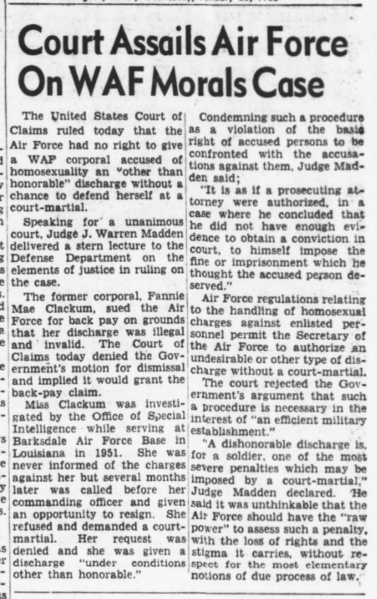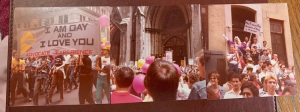This September, the Biden administration announced that VA benefits would be ensured for those removed from the military over one’s sexual orientation or gender identity. The practice of discharging LGBTQIA+ individuals from the armed forces extends back in US history, but became pronounced in the McCarthy era after World War II.
“100,000 American service members were discharged from our armed forces because who they loved or who they were.”
JoDee Winterhof, Human Rights Campaign
Recent discharges were the result of a December 1993 directive for the Department of Defense popularly known as “don’t ask, don’t tell”. The principle, as made obvious by the name, is that the military would not request to identify this information, and service members should withhold informing others. In the current perspective, this seems backwards and cruel, and it is, but it should be noted that the prior history was investigations, interviews, and firings.
It cannot be understated how tremendously impacting World War II was not just on the world but also on the American family. Society would be heavily separated by sex with men sent overseas to fight with some women, and many women at home taking jobs in fields that were once heavily dominated by men. These conditions alongside the uncertainty of the war likely was a period of discovery for queer and transgender communities from the US normally under other social pressures.
As the war came to a close, those coming back to the US saw a society that attempted a forceful return to the status quo, including updated moral laws used to repress queer and transgender individuals. First the military would issue “blue discharges” to those accused of having “homosexual tendencies” or committing “homosexual acts”, among other possible categories.

In the year 1950, Senator Joseph McCarthy and Senate Republicans created an investigation into “reports there are hundreds of homosexuals and moral perverts among government employees”. The investigations would lead to all federal agencies, including the armed forces, investigating employee backgrounds to determine if they may be a queer or transgender individual, or a Communist. This was the period known as McCarthyism, the (Second) Red Scare, and also considered the Lavender Scare for its persecution of queer communities.

By the 70s, the degree to which this was pursued lightened. This was the background that “Don’t Ask, Don’t Tell” came against in the 1990s. In effect, this policy allowed queer people to serve without their identity being an issue, but they were not allowed to serve openly. The Obama administration with its repeal would allow queer, but not transgender, service members to openly serve in 2010. In June of 2016, the Obama administration would end the ban on transgender service members, which was quickly repealed by former President Trump.
The Biden administration’s change is an effective end to the history of these discriminatory policies while the Democratic Party remains in control of the federal government. From the blue discharges of World War II, to the Lavender Scare, to “Don’t Ask, Don’t Tell”, the pursuit against queer and transgender service members is fading as society has gained acceptance of these communities. This should not be accepted as the end of history, but the victory gained should be celebrated.



Be First to Comment